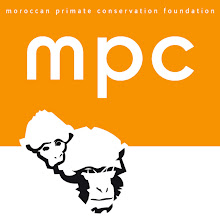11 juni 2008
I visited the forest 2 weeks ago and saw the new born babies. I always get a mixed feeling when i see them every year, knowing that part of them will end up in the illegal trade and live a life in captivity. Although we are taking measures, both in Morocco and in Europe, the problem is still there. Only last month custom officials in Spain informed one of our team that Barbary macaque trade is still very large, and that national laws are not sufficient to punish the people involved in the trade. Outside Madrid a trader was "caught" with many macaques for sale, but the national legislation was so weak that the trader coud continue his activities. Of course we are all working hard to change this.
I am currently working on a new paper to publish my field work I did on the densities of the macaque population in the Middle Atlas. Although the data are 2,5 years old, it is an important paper that shows the drastic decline in the Barbary macaque population.
I hope it will be published soon. In October this year the Barbary macaque will go from the status Vulnerable to the status Endangered on the IUCN Red List. This is a sad occasion. We have all failed to sufficiently protect this species from this fate, despite the concerns that have been raised 3 decades ago, when the species was already declining in numbers.
I know this sounds dramatic, and we should not give up, but I wish sometimes that we could also hear a success story when it comes to the protection of our natural world around us.
On the bright side, and this may sound as a contradiction, the status Endangered can also be positive for the Barbary macaque. Once a species is endangered, more attention will go towards the species and more funds to conserve it. It is sad, but true.
I am currently working on a new paper to publish my field work I did on the densities of the macaque population in the Middle Atlas. Although the data are 2,5 years old, it is an important paper that shows the drastic decline in the Barbary macaque population.
I hope it will be published soon. In October this year the Barbary macaque will go from the status Vulnerable to the status Endangered on the IUCN Red List. This is a sad occasion. We have all failed to sufficiently protect this species from this fate, despite the concerns that have been raised 3 decades ago, when the species was already declining in numbers.
I know this sounds dramatic, and we should not give up, but I wish sometimes that we could also hear a success story when it comes to the protection of our natural world around us.
On the bright side, and this may sound as a contradiction, the status Endangered can also be positive for the Barbary macaque. Once a species is endangered, more attention will go towards the species and more funds to conserve it. It is sad, but true.

